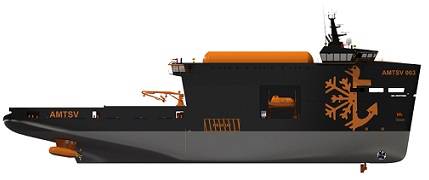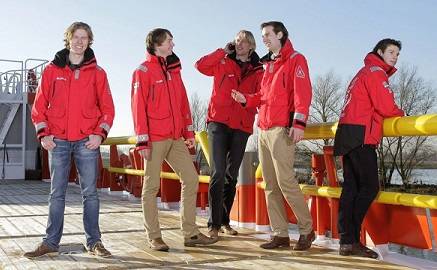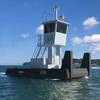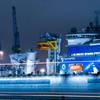Damen Introduces Arctic Towing Supply Vessel Concept
Last February, five Maritime Engineering bachelor students of the Delft University of Technology (the Netherlands) finished their Minor on Arctic Engineering. In cooperation with Damen Shipyards Group and other partners this project has now resulted, amongst others, in a new Arctic vessel: the Damen AMTSV (Arctic Modular Towing Supply Vessel). The 100-meter double acting supply ship is capable of operating in the Barents Sea year round and in the Baffin Bay and Beaufort Sea for 8 months. The AMTSV has the ability to sail through 1.6 meters of level ice at three knots.
The Toptrack program of Delft University of Technology offers students the unique opportunity to organize their own Minor and fill it up with master courses. In this particular case students Reiner Bos, John Huisman, Martijn Obers, Tobias Schaap and Max van der Zalm organized their own Arctic Minor.
“Not taking the easy way out,” was an often heard quote while looking for a subject. One of the least easy challenges in Maritime Engineering seemed to be the Arctic, where a harsh climate hampers all operations and the danger of ice lurks at all times. As it appeared that the Aalto University in Helsinki (Finland)offered several courses on ice, they were included in the project.
Five complementary partners
Furthermore, the help of the industry was sought, turning the Minor into a combined project of shipbuilder Damen, risk management and classification company DNV, Dutch hydrodynamics and nautical research institute Marinand the two universities. The goal: the design of a new Arctic Offshore Support Vessel by combining the skills of all partners into a complete view on shipbuilding, from design to delivery.
The project contained three parts. First, a literature study was carried out, to get an overview of the environment, the market and the geography in the Arctic and to create an operational profile for the vessel. Second, a comparison study was held, testing three existing Damen vessels on their Arctic capabilities. The third stage consisted of a ship design, combining the experiences of the Arctic Minor Team into one innovative concept, launched at January 31st 2013.
Two bows
The Arctic Modular Towing Supply Vessel(AMTSV) is capable of operating in Arctic waters for 8 to 12 months, depending on the specific region. The vessel actually has two bows; when she sails through open water the accommodation will be in the front. Through ice however, she will sail with her thrusters first. The ‘stern first’ concept is not new in arctic shipping. However, in this case it’s a veritable ‘double-bow’ vessel, a concept which is incorporated in the structural lay-out of the ship. This means the AMTVS could be classed as such.
The AMTSV can handle up to 1.6 m of level ice at a speed of 3 knots. The research showed this to be an optimal solution, because the shape of an ice bow is completely different compared to an open water bow. When using two bows no compromises have to be made. Another argument for this concept is that, while sailing through ice, the thrusters will create a flow around the hull which decreases friction.
Because the vessel can sail in both directions, she also has to be capable of towing in both directions. Hence a double acting winch of 300 ton is installed. This winch is installed inside the accommodation so the harsh weather will not affect it.
No compromises on crew conditions are made, by allowing the crew to work in the Enclosed Superstructure (ESS) located behind the conventional superstructure. This superstructure can be kept up above zero degrees with an outside temperature of -55 degrees. The ESS is not only useful for the crew, but temperature sensitive cargo can also be kept in this area.
External LNG storage
This Arctic concept vessel will be running on Liquid Natural Gas (LNG), with Dual Fuelengines, in an effort to make it more environmentally friendly. The main disadvantage of LNG is that it requires a lot of storage capacity. However, ice strengthened vessels have a lot steel weight in the hull compared to open water vessels and this means that the centre of gravity is relatively low. Therefore the disadvantage is negated by placing the LNG tanks on top of the ESS.
Altogether this project is a fine example that the motivation of students, supported by open-minded universities and the partnering companies, can lead to the creation of a substantial and innovative project. The Arctic Minor project taught the team about cooperation, working in a foreign environment and most of all Arctic shipbuilding. For its part, Damen will incorporate their research into its own, ongoing Arctic research program.
www.damen.com
















